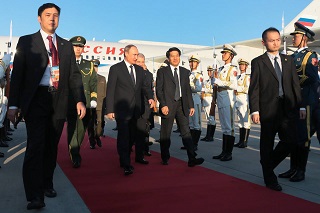The economic nightmare in China and the accompanying reduction in commodity prices may appear to many countries as something between a nuisance and a pothole. However, the situation is a catastrophe to Russia.
In addition to the western sanctions that have squeezed Russia’s economy and currency, slumping oil prices have been sending the economy into virtual free fall. In July, the International Monetary Fund predicted that the economy of Russia would go down by 3.4% this year, topp
A Russian expert at the Atlantic Council in Washington, Anders Aslund, perceives 6% is more probable. Coincidentally, the Russian central bank gave a prediction that was close to Anders’, if the oil prices plummeted to $40 a barrel.
Slowness in economic growth
The growth of Russia was 7% on average from 1999 to 2008 mostly due to high natural gas and oil prices. Russia’s economic foundations have gotten deep cracks because of the falling oil prices. For instance, the country has experienced a shrinking labor force, falling productivity, private enterprise constrained by crony capitalism and kleptocratic state, uncompetitive industries.
The IMF now predicts that Russia’s long-term potential growth is at 1.5%. Mr. Aslund perceives that it is just 1 percent. The standard of living in Russia is barely 40% of the U.S. The sorry situation should concern not only Russia but the world as a whole. Gas and oil wealth helped President Vladmir Putin to strengthen his grip on domestic power and flex the country’s muscles on the global arena. The loss of that wealth would set the world’s geopolitical order scrambling, though signs of such occurrence are not there.
Existence of Parallels of events
Parallels to the occurrences that overpowered the Soviet Union now exist. Gas and oil only began ruling the Soviet economy in 1970s. In his book, “Wheel of Fortune: the Battle for Oil and Power in Russia,” Thane Gustafson writes that the oil and natural gas formed an advanced (if inefficient) technological and industrial power.
The 1970s oil-price spikes helped in preventing collapse while converting the Soviet Union into a petrostate. Gas and oil exports helped the country to pay for grain import from West, invade Afghanistan, and prop up its satellites in the Eastern Europe.
Mr. Gaidar traced the cause of the collapse of the Soviet Union to the Saudi Arabia’s decision to stop supporting the oil price and ramp up production. The resultant price slump crippled Soviet Union export revenues. Russia had to borrow from the West to pay for its imports, leading to loss of its strategic leverage to Eastern Europe and Soviet republics. The Soviet Union finally gave in to the famine and hyperinflation in 1991.
We should not overdraw the parallels. Today, Russia is a market economy that has a large state presence, unlike the Soviet Union in those days. Macroeconomic is responsible to some extent. The central bank left the ruble’s peg in the year 2014, leading to a slump that has increased inflation, cut imports, and squeezed living standards.
Curtailing of foreign borrowing has resulted from Western sanctions over the country’s support for separatists in Eastern Ukraine and annexation of Crimea. This has preserved Russia’s current account surplus and foreign currency reserves. Thus, the country is safe from the crisis that crippled the Soviet Union in 1991 and Russia in 1998.
The damaging legacy of gas and oil wealth is the most important parallel. The country has experienced a classic case of the “natural resource curse,” the tendency of quick resources to cause mushrooming of inefficient industry, push out manufacturing, and lead to fuel corruption.
The president has used revenues from natural resources to expand welfare state, modernize the military, and finance high profile projects.
However, Russian exports may be squeezed due to the Western Europe seeking for more reliable energy sources. The country is thus rushing to seek innovation that will help it diversify away from gas and oil.


